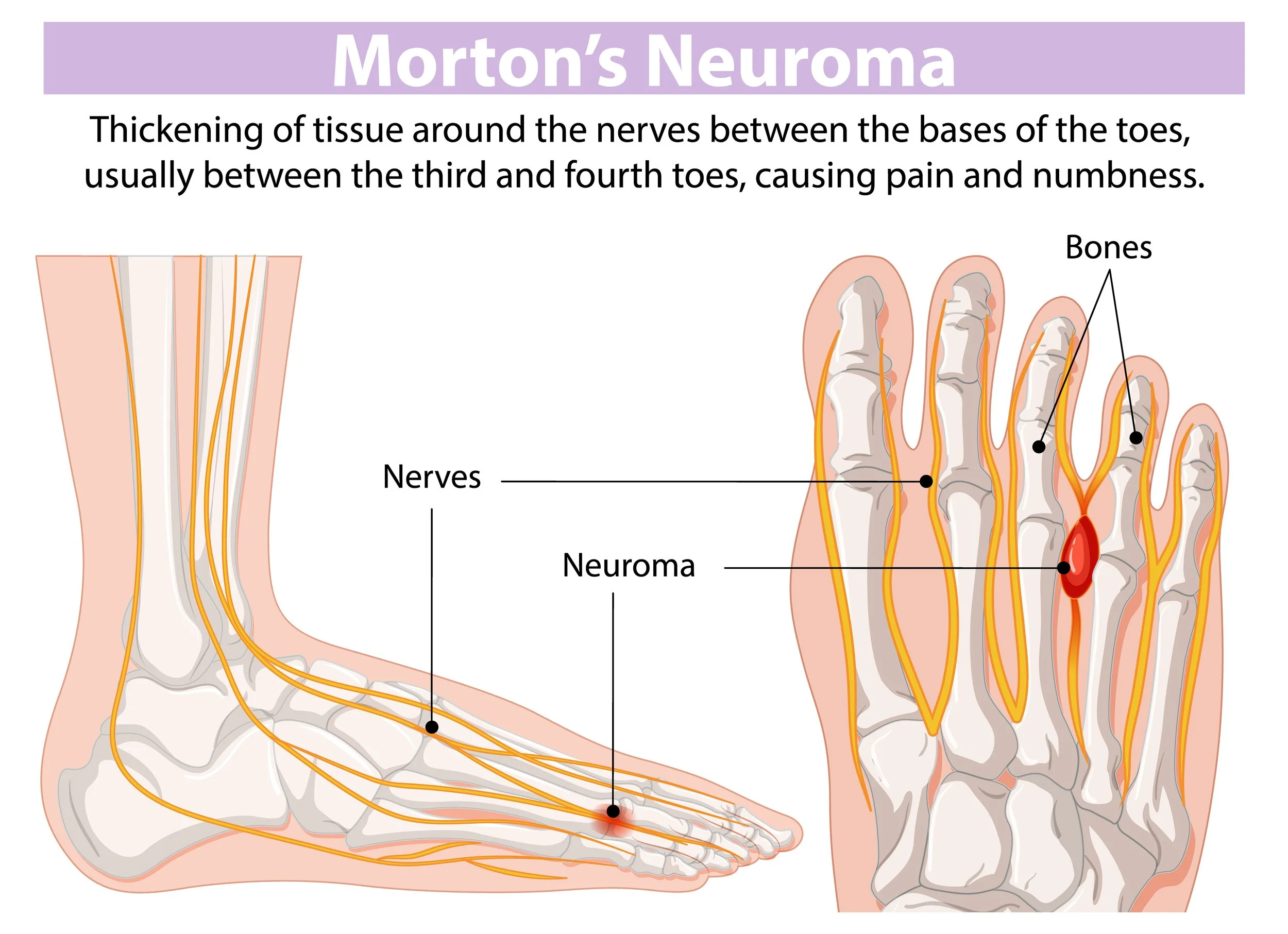
NEUROMA
That sudden, sharp pain in the ball of your foot that feels like you’re stepping on a pebble? If it doesn’t go away after a few days, you may be dealing with a neuroma. This condition can make every step uncomfortable, and if ignored, may lead to lasting nerve irritation.
Learn how to care for your neuroma by schedule your visit today!
What is a Neuroma?
A neuroma, sometimes called Morton’s neuroma, is a thickening of a nerve, most often between the third and fourth toes. The nerve becomes irritated from pressure or compression, which can be linked to:
Narrow or tight shoes
High heels
Foot injuries or repetitive stress
Conditions such as bunions or hammertoes
Symptoms include:
Burning, tingling, or numbness in the ball of the foot
Pain that flares up with certain shoes or activities
Feeling like you’re walking on a rock or bunched-up sock
Temporary relief with massage or rest, but recurring discomfort
Over time, untreated neuromas can worsen and cause long-term nerve irritation.
Treatment Options for Neuroma
👟 CONSERVATIVE CARE
Switching to roomier, supportive shoes
Adding shoe padding or cushions to reduce pressure
Ice and rest to calm irritation
Anti-inflammatory medications for pain control
Custom orthotics to correct foot mechanics
Cortisone injections to reduce inflammation
⚡️ ADVANCED, NON-SURGICAL CARE
Shockwave therapy: improves circulation, reduces inflammation, and stimulates healing
💉 SURGERY
- Nerve decompression or removal (neurectomy) – an option when other treatments do not provide lasting relief
Frequently Asked Questions About Neuroma
-
Dr. Doan will examine your foot, review your symptoms, and may use ultrasound or X-ray to rule out other conditions.
-
Mild cases may improve with conservative care, but most neuromas will not disappear completely without treatment. Early care helps prevent permanent nerve damage.
-
If you have persistent pain in the ball of your foot that feels like walking on a pebble or your symptoms interfere with daily activities, schedule an appointment promptly.
-
Most conservative treatments such as evaluation, or injections are covered. Coverage for advanced therapies or surgery depends on your individual insurance plan.
Disclaimer: The information on this website is for educational purposes only and should not replace professional medical advice, diagnosis, or treatment. Always consult your doctor with any questions about your health.
